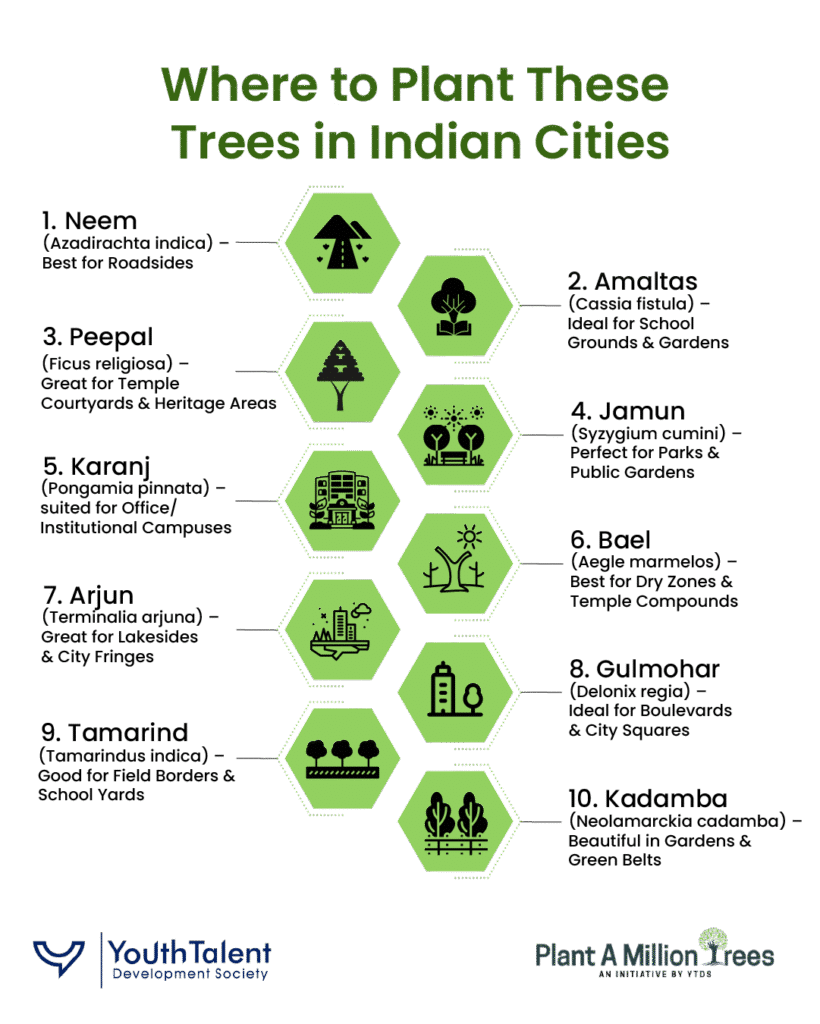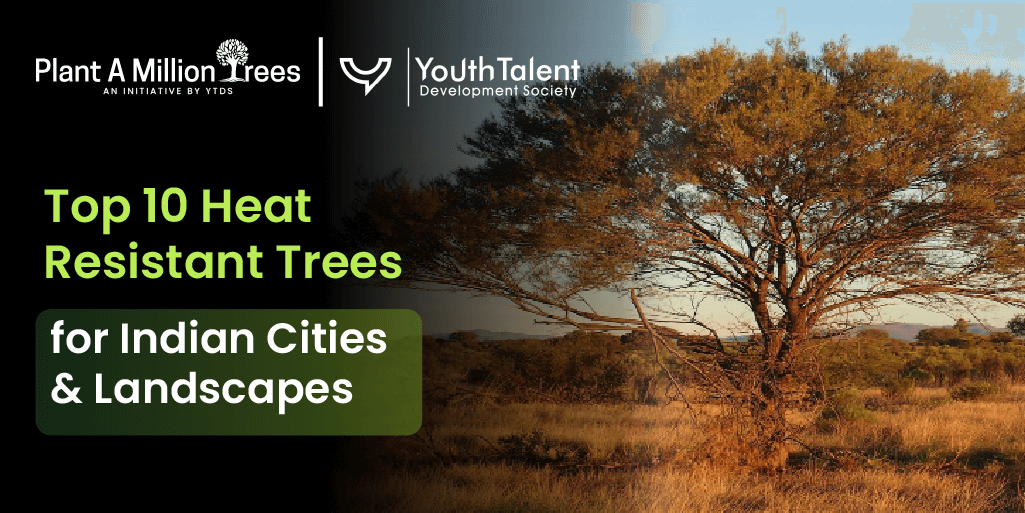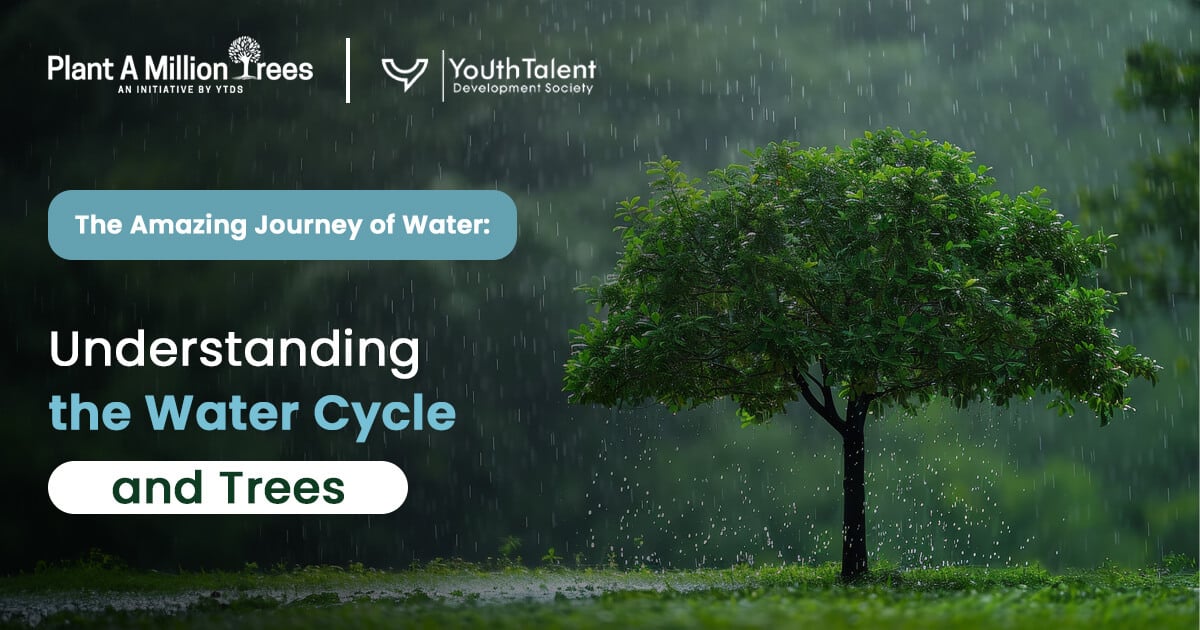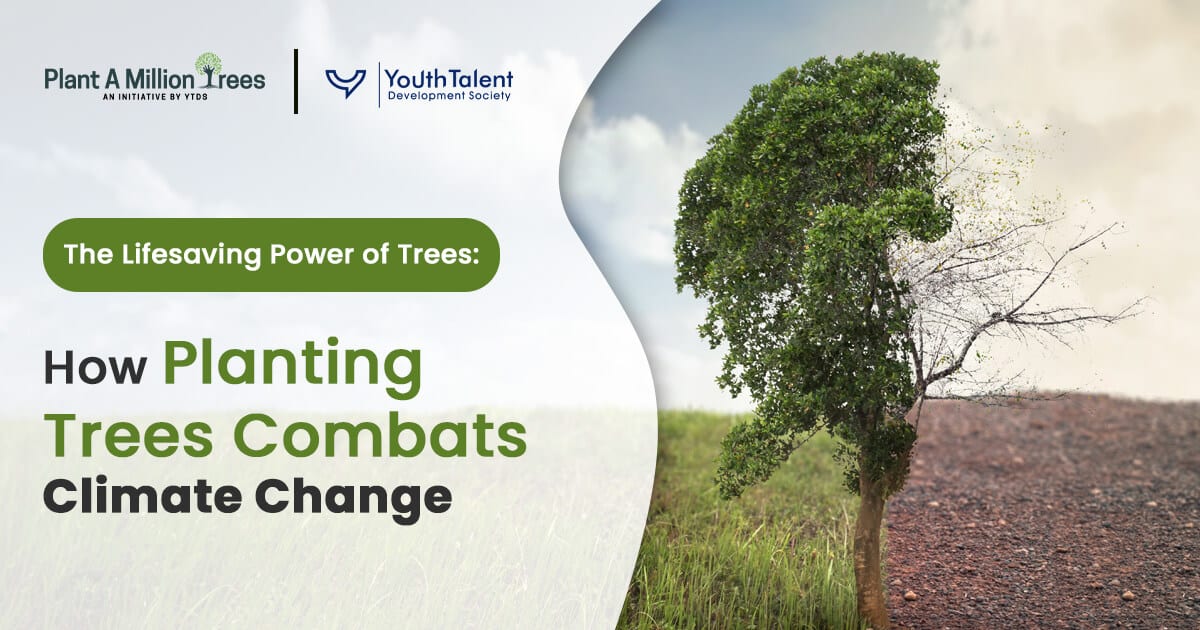Vitalized by the very life-giving water, it circulates the highest world’s journey in the real odyssey-The Water Cycle, and...
With Indian cities coming under the fusillade of summer heatwaves every year, the demand in climate-adaptation landscaping can hardly be stronger.
As the climate inflates, other heat domes occur and the cover of trees is drastically depleted, the urban capital of India desperately needs natural remedies to obtain this thermal pressure.
Trees, the natural air conditioners, can be described as some of the best resources and long-lasting solutions.
Tree Plantations are likely to cool the surrounding areas, offer shades, purify the air, and transform concrete jungles into green spaces, as it has happened in Mumbai to Jaipur and Delhi to Chennai.
This blog presents the list of the best 10 heat-resistant treespertinent and suitable in Indian cities and landscapes, especially trees that withstand hot environments, perform well under the conditions of drought, and need very little water in the landscape, yet bring both ornamental and ecological benefits to the urban scene.
Why Cities Need Heat-Tolerant Trees
The cities become traps of heat as they have too much concrete, asphalt, emissions, etc. This is referred to as the urban heat island effect; and the consequence of this effect is that cities are hotter than the surrounding rural regions.
Indian metros have also experienced abnormal temperatures (2 o C-4 o C above normal) in the recent years which have resulted into higher cooling energy usage, health hazards, and outdoor discomfort.
A plausible fix to this crisis can be achieved by using heat resistant trees in India. The trees have their own dense canopies which acts as a natural shade, lowers the temperatures of surfaces and cools the air around.
Actually, a street with trees will be five degrees colder as compared to the one without trees. In addition, the trees also allow green infrastructure, urban forestry, and carbon sink, which can help combat heat and pollution.
Urban greening with climate-adaptive species, already operates in cities such as Delhi, Pune and Ahmedabad. Planting drought-tolerant trees across urban India can make the cities in India cool and green, regardless of whether that is done to fill vacant public parks, road medians, school campuses or in gated communities.
Top 10 Heat Resistant Trees for Indian Landscapes
This is a perfectly handpicked selection of 10 trees that flourish in the scorcher of Indian climate. These are species, which are drought tolerant, resilient and have been selected with regard to the indigenous adaptability, canopy cover, water requirements and summer plantation suitability.
1. Neem ( Azadirachta indica )
Why it is the best: It is one of the most famous, universal native heat tolerant trees and is also known to grow in very dry and arid environments. Its wide canopy gives it a dense shade and the leaf is useful as medicine and insect repellent.
- It reaches a height of 20 meters
- Water Needs: Low
- Speed of Growth: Medium
- Best suited: Road side plantations, parklands etc
2. Amaltas ( Cassia fistula )
Why it is perfect: This heat tolerant tree-named Amaltas, also known as Golden Shower tree-is not only a structural fan, it is an artistic eyesore. It has bright yellow flowers which bloom in peak summer hence it is useful as well as beautiful.
- Height: 10-15 meters
- Water Needs: Low
- Speed of Growth: Medium
- Ideal uses: Backyard garden, places of entertainment, educational institutions
3. Terminalia arjuna (Arjun)
Why it is perfect: Arjun is so drought tolerant and its roots are very deep, and thus it can effectively survive when temperatures are too hot during dry seasons. It is also a very important component that controls soil erosion at the bank of the river and highway.
- Height: 18-25 meters
- Water Needs: Low – Moderate
- Speed of growth: Low to medium fast
- Suitable to: City fringe, lake sides
4. Bael ( Aegle marmelos )
Why it is ideal: A sacred and a climate-resilient tree tolerates extreme summer temperature and soil with low fertility. It is popular due to its refreshing fruits, religious importance and capacity to grow relatively effortlessly.
- Height: 10-12 meters
- Water needs: Very low
- Speed of growth: medium
- Suits the following: Temple grounds, dry areas
5. Bel Hutchissonia Karanj (Pongamia pinnata)
Why it’s great: Karanj is a contender among trees able to withstand hot temperatures as it has a hardy and nitrogen-fixing ability. It enriches the soil, gives shade and produces bio-fuel.
- Height: 15 – 20 m
- Water needs: Low
- Growth speed: Rapid
- Greatest for: Institutional campuses, village rd.
6. Gulmohur (Delonix regia)
Why it’s good: Though gulmohar takes some space because of it’s wide spread.
- Height: Height: 10–12 m
- Water Needs: Moderate.
- Growth speed: Rapid
- Suited to: Parks, boulevards, squares in the cities
7. Jamun ( Syzygium cumini )
Why it is the best: A do-it-all tree benefiting as food and a medicine tree and a good shade tree in summertime. Jamun has a dense cover that helps to maintain low temperatures thereby suitable in plantation under hot weather conditions.
- Height: 20-30 m
- Water Require: Medium
- Speed of the growth: Slow to medium
- Use for: Public parks, school yard
8. Peepal tree (Ficus religiosa)
Why it works: Treasured by all the cultures, Peepal trees are hardy surivors of Indian summers. They have large leaves with high longevity and such trees have the best shade and oxygen production.
- Height: 20-25m
- Water Require: Low
- Curve Rate: 350 Military.
- Use For: City temples and heritage places
9. Tamarind ( Tamarindus indica )
Why it is perfect: Tamarind trees have thick foliage and strong trunks, thus making them good drought tolerant trees. They are long-living, fruit bearing and are popular in the south of India.
- Height: 12-18m
- Water Require: Low
- Curve Rate: 350 Military.
- Suited to: Worksides, fields and school yards
10. Kadamba ( Neolamarckia cadamba )
Why it is perfect: Being an exotic and much less known but rapidly growing tree, Kadamba prefers hot and humid regions where it can serve as an ornamental tree due to its scent and rounded blossoms.
- Height:15-20 m
- Water Require: Medium
- Growth: Rapid
- Good for: garden, green Belt and semi urban area

How to Choose Trees Based on Climate Zones
The climate of India highly differs in different regions. It will thus be vital to make the correct selection of the tree in your particular zone in regard to long-term survival and reduced maintenance.
Semi Arid & Arid Zones (e.g. Rajasthan, Gujarat)
- The top recommendations: Neem, Bael, Karanj, Tamarind
- Concentrate on: Depth rooted, drought resistant native species
Tropical and Coastal (e.g. Kerala / Goa / Odisha)
- Jamun, Kadamba, Arjun are the best options.
- Key: Salt-tolerant, humidity loving trees
HOT & DRY ZONES.(maharashtra, telangana)
- Most preferable: Peepal, Amaltas, Gulmohar
- Target: Providing canopies resistant to shade
Apply tree zoning principles of soil, exposure to sunlight and heat. This consistency of the microclimate with the type of tree will make it grow and survive better.
Tips for Planting and Maintaining Heat-Tolerant Trees
Tree planting in hot climate needs a little bit of planning. These are some of the guide points to supporter care to make your summer plantations successful:
1. Perfect Planting Depth
- Create a hole of twice the diameter of the root ball creating a depth not exceeding the height of the root system.
2. Watering Schedule
- Newly planted trees should be done in half an inch of deep root water which is done two times per week.
- Employ drip irrigation in order to save on water.
3. Mulching
- Place some layer of mulch around the base, 3 inches, which will retain the moisture and suppress the weeds.
4. Training and Pruning
- Light pruning serves to form young trees and to eliminate the dead branches.
- Do not over prune in the hottest months of the year.
5. Fertilization
- Apply compost or slow burning organic fertilizers sparingly.
- Indigenous heat resistant tress in India usually grow without any use of chemicals
Stop wasting your plantation activities and use this 2022 summer plantation guide. A properly taken care of tree does not only live, but contributes to the sustained value of the ecosystem.
How Indian Cities Are Fighting the Heat With Trees
Climate-resilient urban planning is a rogue already being taken up by many Indian cities and non-profits. We can consider some of the real life examples:
The Green Cover Plan of Ahmedabad
- Through its Environmental Planting category of its Urban Heat Resilience Strategy, Ahmedabad is also planting thousands of drought resistant trees in heat prone areas.
- They have focused on smart forestry with trees such as Neem and Arjun.
The Tree Mapping Project of Hyderabad
- The municipal body is monitoring the condition and survival of trees with the help of GIS mapping and climatic information in collaboration with NGOs.
The rising awareness of trees as warriors in the climate change battle is reflected in such NGO plantation drives, and this is spread more by the government of cities who support the drives.
Conclusion
Heat resistant trees, beyond being a landscaping option, are a requirement in climate resilience in the Indian cities. Be it less heat islands and cleaner air, better biodiversity and the health of the people, their uses are spellbinding and extensive.
India is not just an urbanizing nation, it is doing so at a fast pace necessitating the need to incorporate such useful trees to grow in hot weather in India in our city development, policies and even our own backyards.
We ought not to wait around till the following hot weather to introduce change. Here is a cheer to change–let us root for a change–root change. Let us become planters, carers and builders of a cooler tomorrow, tree by tree.
“Grow to the Green. Shade the City. Breath Better.”
CSR: A Call to Action:
Participate in Urban plantation drive or any other organized by Youth Talent Development Society, or be our own. To give guides and assistance go to YTDS official website. Let us make our cities go green together!



